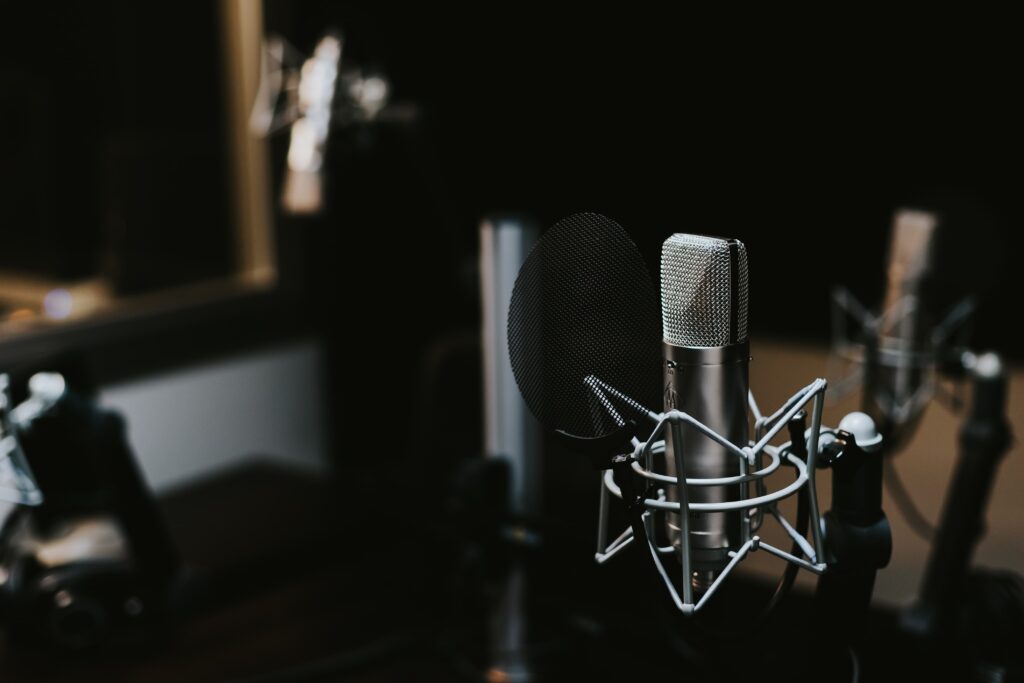Tube microphones, called valve microphones, use vacuum tubes to amplify the signal’s path. When vacuum tubes are used in microphones, the sound is warm and natural and has its character.
In 1906, the first vacuum tube was made, and it took a little while for them to be used in microphones. The Western Electric Model 618A was the first vacuum tube microphone. It was made in the 1920s and used extensively in the film and radio industries.
RCA and Neumann were the other companies that made vacuum tube microphones in the 1930s and 1940s. Because of how well they sound and how long they last, these microphones became popular in the recording industry.
Vacuum tube microphones were still used throughout the 20th century, and many recording engineers and musicians still use them. They are often used on various instruments, vocals, and other sounds because of their smooth, warm sound.
What is a tube microphone?
A tube microphone, called a valve microphone, uses vacuum tubes to amplify the signal’s path. When vacuum tubes are used in microphones, the sound is warm and natural and has its own character.
Features of a Tube Microphone
- Warm, smooth sound: Tube microphones are known for their warm, smooth sound. This is because how the vacuum tube makes the signal stronger.
- High sensitivity: Tube microphones are usually more sensitive than other types, which means they can pick up a wide range of sounds with great detail and clarity.
- Gain that can be changed: Many tube microphones have a control that lets you change how much the signal is amplified.
- Large-diaphragm: Many tube microphones have a large diaphragm, which lets them pick up a wide range of frequencies and make a full, rich sound.
- Durable construction: Tube microphones are known for how durable they are and how long they last. They are mostly made with high-quality materials and construction methods that make them last longer.
Pros of a Tube Microphone
Using a tube microphone has a number of benefits:
- Warm, smooth sound: Tube microphones are known for their warm, soft sound, often sounding more “natural” or “analog” than other microphones. Because of this, they are good for recording a wide range of instruments and vocals.
- Dynamic range: Tube microphones have a wide dynamic range, which means they can record a wide range of volumes without distorting. Because of this, they are good for recording sources with a wide range of dynamics, like a solo instrument or a singer who can sing in many different ways.
- Versatility: Tube microphones are very flexible and can be used to record vocals, instruments, and even the sound of a room. They are also often used to record percussion or as overhead mics for drums.
- Quality of construction: Most tube microphones are well-made and durable; many are made to last for decades. Because of this, they are a good investment for studios and live sound systems.
- Longevity: Many tube microphones have been used for decades, and with proper care, they can be used for many more years. Because of this, they are a good long-term investment for studios and live sound rigs that want to use high-quality microphones.
Cons of a Tube Microphone
- Price: Tube microphones are often more expensive than other kinds of microphones. This is partly because the vacuum tube and other parts used to make them are more expensive.
- Size and weight: Tube microphones are often bigger and heavier than other microphones, making them less portable.
- Power: Tube microphones often need more power than other microphones, so they may only work with some audio recording equipment.
- Maintenance: Tube microphones may need more maintenance than other types of microphones because the vacuum tube may need to be replaced from time to time.
- Limited frequency response: Even though many tube microphones can pick up a wide range of frequencies, some models may be better at picking up the highest or lowest frequencies.
Does a tube microphone need phantom power?
What is tube microphone preamp?
Tube microphone preamps offer warmth, smoothness, and color to the signal. They’re famous among artists and audio engineers for adding warmth and depth to vocals and instruments. Tube mic preamps can be independent or fitted into a console or interface. They have a microphone input and a line-level output, with gain control, phantom power, and high-pass filters.




